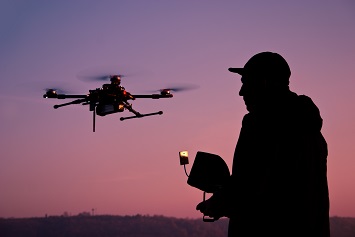In May 2018, the Occupational Safety and Health Administration (OSHA) issued a memorandum permitting the use of drones to inspect workplaces under certain circumstances. Since that time, OSHA has used unmanned aircraft systems (UASs or drones ) in a number of investigations, and their use is expected to become more common in the future.
Know What to Expect
If you face the possibility of an OSHA drone inspection of your workplace, here are some points to keep in mind:
- Investigators may only use drones in the course of an OSHA inspection and only with an employer’s consent.
- Review with the OSHA drone team the specifics of its flight inspection route and plan.
- Consider whether the agency’s proposed drone inspection may reveal operations, processes, or specialized equipment that constitute trade secrets.
- An OSHA drone operations team must have three members, and the drone must always remain in the team’s sight. Like a traditional “on-the-ground” inspection, an employer should accompany the drone team to keep track of what areas and operations are observed by agency personnel.
- An inspection drone may operate up to 400 feet above the ground or above the top of any structures. Based on such a vantage point, the scope of an OSHA inspection can expand if a drone observes additional, potential violations “in plain view.”
- Ask the team whether they are recording (photos or video) the drone inspection. If so, request copies of the recordings.
- OSHA sometimes works in coordination with the Environmental Protection Agency (EPA). If a drone observes potential environmental dangers in the course of an inspection, OSHA is free to share the information with the EPA.
Bottom Line
Drones are likely to be more common in coming years. Don’t be caught completely unprepared by a drone inspection. Know your rights and responsibilities, as well as the potential pitfalls you could face.
| Charlie Plumb, an attorney and shareholder of McAfee & Taft, may be reached at charlie.plumb@mcafeetaft.com. |

